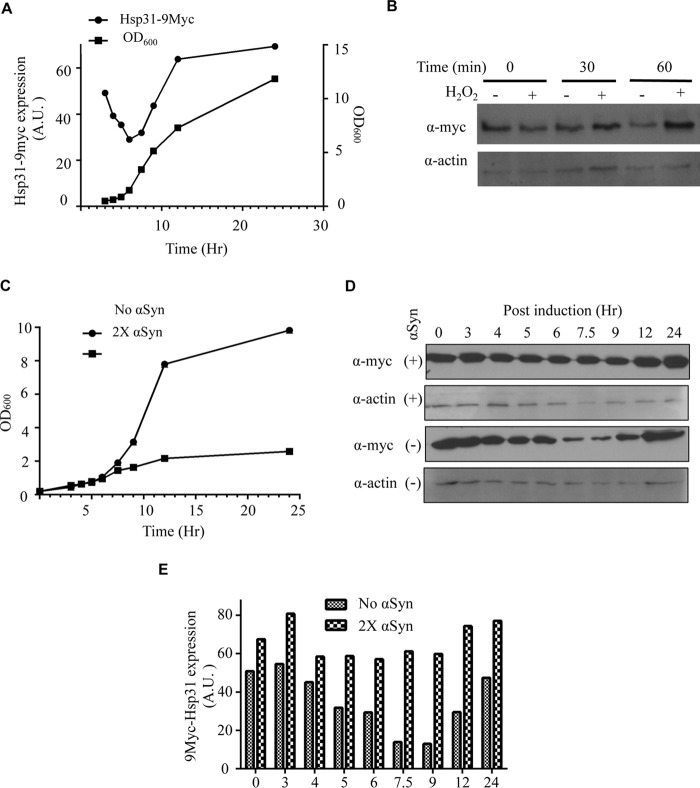FIGURE 4.
Hsp31 expression increases at early stationary phase, under oxidizing conditions, and with αSyn expression. A, Hsp31 reached maximal expression at early stationary phase. Cell growth curves are represented by A600 values (■). Cells were normalized to A600 = 0.2 at the start, and aliquots were collected until stationary phase was reached ∼12 h postinoculation and at 24 h when the culture was saturated. The expression of genomically tagged Hsp31-9myc expression was assessed via immunoblot analysis of cell lysates obtained at corresponding time points. The plot shows expression levels normalized to β-actin levels (●). B, H2O2 treatment increases the expression of Hsp31. The Hsp31–9myc strain was exposed to 1 mm H2O2 treatment for 30 and 60 min, and increased Hsp31 expression was determined by immunoblot. Samples were normalized for cellular density by A600, and β-actin was used as a loading control. These data are representative of three independent experiments. C, growth curves showing the inhibitory effect of GAL-αSyn expression in yeast harboring two copies of αSyn. Cells were normalized to A600 = 0.2 at hour 0, representing the time of inoculation, and the OD was monitored for 24 h at the identical time points used in A. Cells containing two copies of genomically integrated αSyn (■) grew more slowly 9 h after inoculation compared with the same strain without αSyn (●). D, Hsp31–9myc expression increased in the presence of induced GAL-αSyn. The immunoblot was probed with anti-Myc and anti-β-actin antibodies. The level of Hsp31 at the 7.5 and 9 h time points did not decrease in the 2xαSyn strain compared with the strain that did not express αSyn. E, quantitation of Hsp31 expression level reveals increased expression during log phase. The Hsp31–9myc-tagged cells with and without two copies of αSyn were harvested at 0, 3, 4, 5, 6, 7.5, 9, 12, and 24 h after inoculation. The levels of Hsp31 expression were quantified and normalized to the β-actin signal. Three independent experiments were performed, and all experiments resulted in similar trends as observed here. A.U., arbitrary units.

